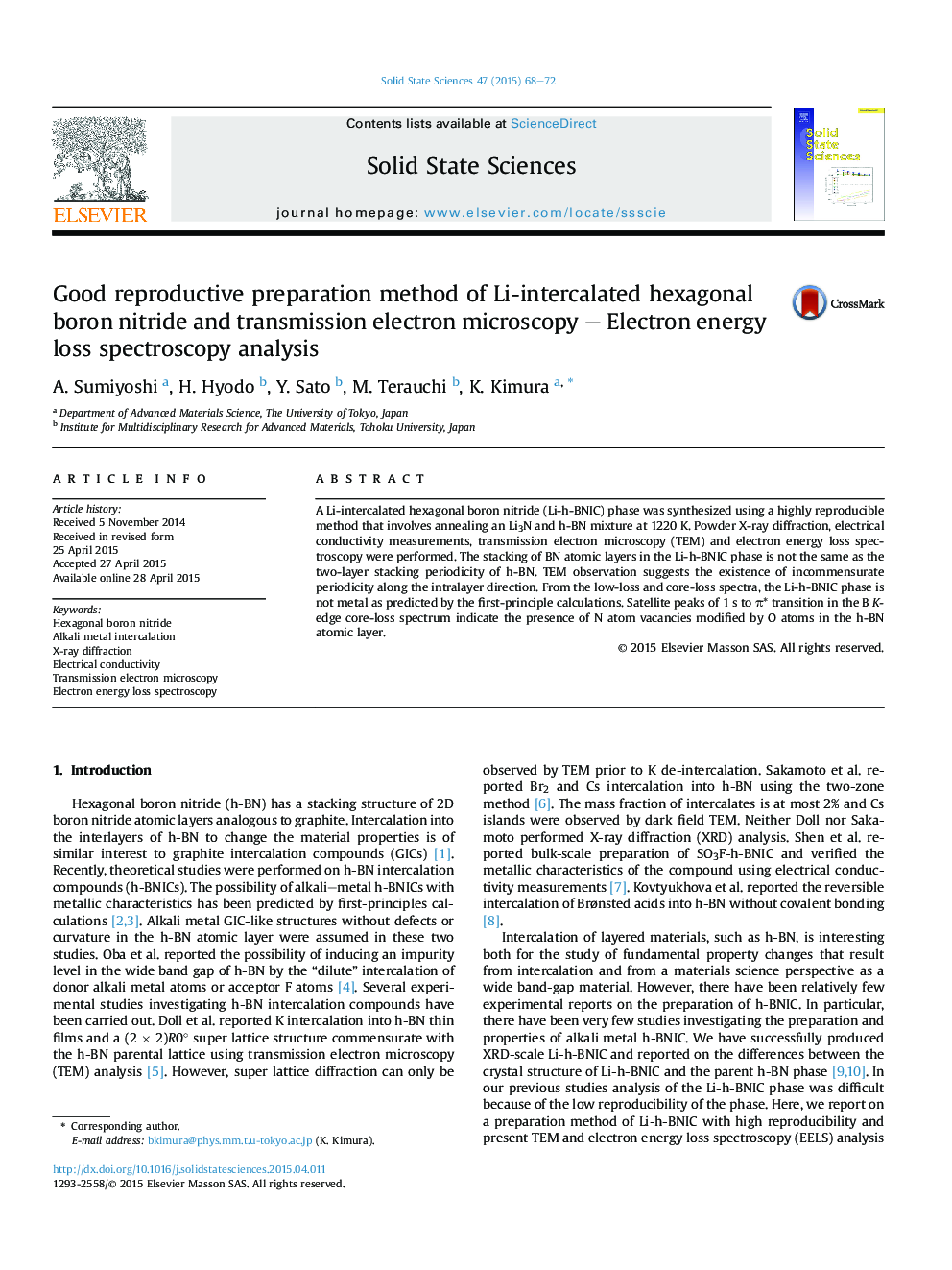| Article ID | Journal | Published Year | Pages | File Type |
|---|---|---|---|---|
| 1504201 | Solid State Sciences | 2015 | 5 Pages |
•A Li-intercalated h-BN phase was synthesized using a highly reproducible method.•The stacking of BN atomic layers is not the two layers stacking of h-BN but one layer.•From EELS, it is not metal as predicted by the first-principle calculations.•Satellite peaks in EELS indicate N atom vacancies modified by O atoms.
A Li-intercalated hexagonal boron nitride (Li-h-BNIC) phase was synthesized using a highly reproducible method that involves annealing an Li3N and h-BN mixture at 1220 K. Powder X-ray diffraction, electrical conductivity measurements, transmission electron microscopy (TEM) and electron energy loss spectroscopy were performed. The stacking of BN atomic layers in the Li-h-BNIC phase is not the same as the two-layer stacking periodicity of h-BN. TEM observation suggests the existence of incommensurate periodicity along the intralayer direction. From the low-loss and core-loss spectra, the Li-h-BNIC phase is not metal as predicted by the first-principle calculations. Satellite peaks of 1 s to π* transition in the B K-edge core-loss spectrum indicate the presence of N atom vacancies modified by O atoms in the h-BN atomic layer.
Graphical abstractFigure optionsDownload full-size imageDownload as PowerPoint slide
